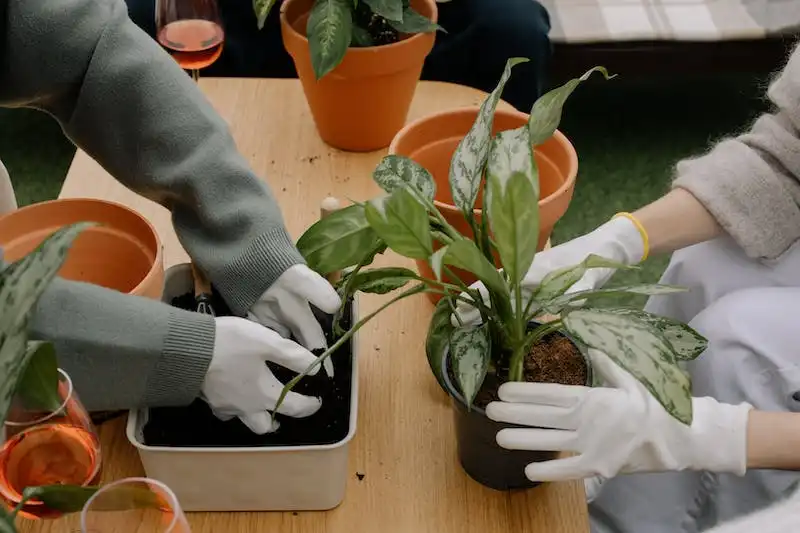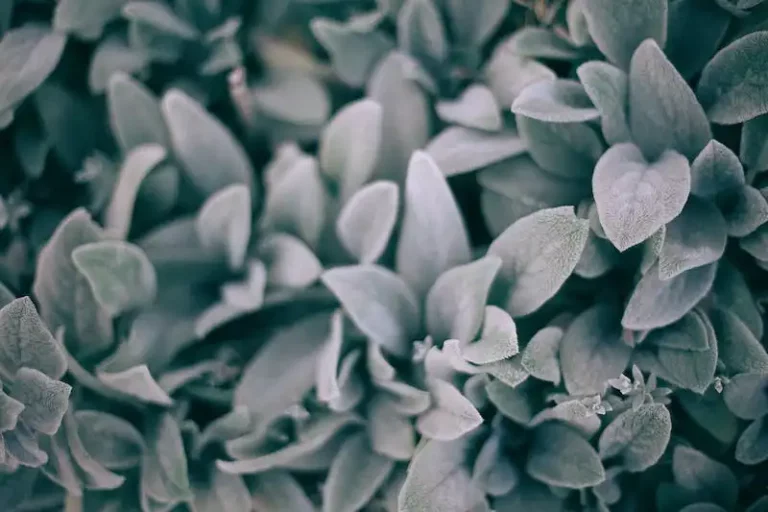When it comes to choosing evergreens for your landscape, there are plenty of options to consider. One popular choice is the arborvitae, which comes in a variety of sizes, shapes, and colors. The tips of the arborvitae can range in color from bright green to a deep, rich brown, making it a versatile option for any landscape.
If you’re looking for a unique evergreen, the Colorado Silberlocke is a solid choice. With its scientific name of Picea pungens ‘Glauca’, this tree offers a unique texture and color that is sure to catch your eye. The Colorado Silberlocke has slender, blue-green needles that give the tree an almost silver appearance.
For those looking for an alternative to the traditional broadleaf evergreen, the Eastern Hemlock is a popular option. With its dark green, soft needles, the Eastern Hemlock adds a touch of elegance to any landscape. Not only is it beautiful to look at, but it also offers a variety of practical benefits.
The Eastern Hemlock can provide a natural windbreak, helping to protect your landscape from harsh winds. It also has a high tolerance for shade, making it an excellent option for those parts of your yard that receive less sunlight. Additionally, the Eastern Hemlock needs minimal care, making it easy to maintain.
If you’re looking for a versatile evergreen, the Alaskan Cedar is a great choice. With its graceful, weeping branches and dense foliage, the Alaskan Cedar is an excellent focal point in any landscape. It also provides a valuable source of food and shelter for insects and birds, making it a must-have for wildlife enthusiasts.
When planting evergreens, it’s important to ensure that you provide them with the proper care and attention. Evergreens need a moist, well-drained soil to thrive, so be sure to water them regularly. Adding a layer of mulch around the base of the tree will help to retain moisture and provide a steady source of nutrients.
Evergreens also benefit from slow-release fertilizer, which provides a steady source of nutrients throughout the year. Be sure to fertilize your evergreens in late spring or early summer, as this is when they are most actively growing. If you’re unsure about the specific needs of the evergreens you choose, consult with a local extension office or nursery for guidance.
In conclusion, choosing the right evergreens for your landscape can add texture, color, and beauty to your outdoor space. Whether you’re looking for a bestseller like the arborvitae or a unique option like the Colorado Silberlocke, there are plenty of choices available. By considering the needs and characteristics of each type of evergreen, you can create a landscape that is not only visually appealing but also suited to your local climate and gardening preferences.
How To Grow Evergreen Trees From Seeds
Growing evergreen trees from seeds can be a rewarding alternative to purchasing established trees. It allows you to choose from a wide variety of evergreen species, including conifers like spruce and pine, as well as ornamental varieties such as the dwarf Hinoki cypress or the Korean Fir.
If you’re wondering how to grow evergreen trees from seeds, follow these simple steps to get started:
1. Obtain the seeds: You can collect seeds from mature evergreen trees in your local area, or you can purchase them from a reputable seed supplier. Make sure to choose seeds that are fresh and viable for better chances of successful germination.
2. Prepare the soil: Evergreen trees prefer well-draining soil. Mix equal parts of compost and sand to create a loose and fertile soil mixture. This will help the seedlings establish a strong root system.
3. Start the seeds indoors: Fill a seed tray with the prepared soil mixture and sow the seeds according to the package instructions. Make sure to provide them with enough sunlight or use a grow light to help them germinate.
4. Provide consistent moisture: Keep the soil moist but not waterlogged. Water the seedlings gently using a misting bottle or a sprinkler system. Avoid overwatering, as it can lead to root rot.
5. Mulch and protect: Once the seedlings have developed a few sets of true leaves, mulch the soil around them with straw or wood chips. This will help retain moisture and prevent weed growth. If you live in an area with harsh winters, consider protecting the seedlings with a layer of burlap or frost cloth.
6. Transplant carefully: When the seedlings have grown to a suitable size, typically after one to two years, they can be transplanted into their permanent location. Dig a hole slightly larger than the root ball and plant the seedling, making sure the soil is well-compacted around the roots.
7. Provide ongoing care: Evergreen trees require regular watering, especially during hot and dry periods. They don’t typically need much fertilizing, but an occasional application of slow-release fertilizer can help promote healthy growth. Monitor the trees for signs of insect or disease infestations and take appropriate measures if necessary.
Growing evergreen trees from seeds can be a bit more challenging compared to purchasing established trees, but it can be a rewarding experience. With proper care and attention, you can enjoy the beauty and year-round value that these trees bring to your landscape.
Get started growing evergreens from seed
Conifers don’t grow easily, but with a little patience, you can learn how to grow evergreen trees from seeds in your own backyard. Here are some scientific tips to help you get started:
- Choose the best seeds: Look for seeds from healthy, mature trees with desirable traits, such as height, branching, and color.
- Don’t disturb the seeds: Evergreen seeds are fragile, so handle them with care when planting.
- Plant the seeds in late winter or early spring: This is the best time to plant evergreen seeds, allowing them to germinate before the growing season begins.
- Provide moist and well-drained soil: Evergreen seeds need moist soil to germinate and establish roots. Ensure good drainage to prevent rotting.
- Use a blend of moss, peat, and shredded bark mulch: This mixture provides the necessary nutrients for growth and helps retain moisture.
- Mulch around the newly planted seeds: Mulching helps conserve soil moisture, suppress weed growth, and insulate the soil.
- Choose a suitable planting site: Evergreens prefer sunny or partially shaded sites with good air circulation.
- Share the space: Avoid planting evergreens too close together to prevent overcrowding and competition for sunlight, water, and nutrients.
- Provide fertilizer when needed: Evergreen trees may benefit from an occasional application of slow-release fertilizer to promote healthy growth.
- Be patient: Evergreens from seed take several years to grow into mature trees, so don’t expect instant results.
- Watch out for pests and diseases: Keep an eye on your evergreens for problems like aphids, spider mites, and fungal diseases. Take prompt action to prevent damage.
- Learn from the experts: Read books, attend workshops, or consult with local garden centers for more advice on growing evergreens from seed.
With these tips, you can embark on your journey to grow beautiful evergreen trees from seeds in your residential landscape. The satisfaction of nurturing your own tannenbaum or Swiss pine is worth the time and effort spent.
How to Grow Conifer Seeds Before Planting
If you’re considering adding evergreens to your landscape, growing conifer seeds before planting can be a great way to ensure stronger and healthier trees. Conifers are a popular choice due to their tolerance to harsh winters, strong winds, and their ability to provide year-round greenery to your backyard.
When it comes to growing conifer seeds, there are a few important steps to follow. First, make sure you have a good source of seeds. You can find conifer seeds at local nurseries or online sources. Popular conifers to consider growing from seed include juniper, blueberry, and silver whispers™.
Once you have your conifer seeds, it’s time to prepare them for germination. Start by soaking the seeds in water for 24 hours. This will help soften the seed coat and increase germination rates. After soaking, carefully remove any debris or unviable seeds.
Next, fill a seed tray or pots with a well-draining potting mix. It’s important to choose a potting mix specifically designed for conifers, as they have unique nutrient and drainage requirements. Place the seeds on top of the potting mix and lightly press them into the soil. Space them out so that when they sprout and grow, their roots have sufficient room to develop.
Water the seeds gently to ensure the soil is evenly moist, but not soaked. Conifers prefer slightly acidic soil, so if your potting mix doesn’t have the right pH level, you can adjust it by adding sulfur or lime. Additionally, adding a slow-release fertilizer specifically formulated for conifers can provide the necessary nutrients for healthy growth.
Provide the seeds with adequate sunlight and warmth. Place the seed tray or pots in a location where they will receive at least 6 hours of direct sunlight a day. Maintain a temperature of around 70°F (21°C) for optimal germination. Use a greenhouse or a sunny windowsill to create the ideal growing conditions for your conifer seeds.
During the germination process, it’s important to monitor the moisture level of the soil. Keep it consistently moist, but not wet, as excessive moisture can lead to fungal diseases. Avoid overwatering and ensure proper drainage to prevent problems. You can also cover the seed tray or pots with a plastic wrap to help retain moisture. Remove the plastic wrap once the seeds sprout to prevent fungal growth.
Once the conifer seedlings reach a height of about 3 inches, they’re ready to be transplanted into larger pots or your landscape. Choose a location that provides the right amount of sunlight and protection from strong winds. Before planting them in your landscape, consider the mature size of the conifers, as some varieties can grow quite large. If space is limited, choose slender or dwarf varieties to avoid overcrowding.
When planting in your landscape, make sure to dig a hole that is wide and deep enough to accommodate the root system. Backfill the hole with a mixture of soil and compost, ensuring good soil contact with the roots. Water the newly planted conifers thoroughly and add a layer of mulch around the base to help retain moisture and suppress weed growth.
As your conifers grow, regular pruning may be needed to maintain their desired shape and size. Pruning also helps promote airflow within the tree, reducing the risk of disease. However, be cautious not to prune too much, as excessive pruning can weaken the tree and make it more susceptible to environmental stressors.
By following these steps, you can successfully grow conifer seeds and enjoy the beauty of these evergreens in your landscape. Whether you’re looking for color, texture, or a year-round source of greenery, conifers are an excellent choice that will enhance the overall aesthetic of your outdoor space.




